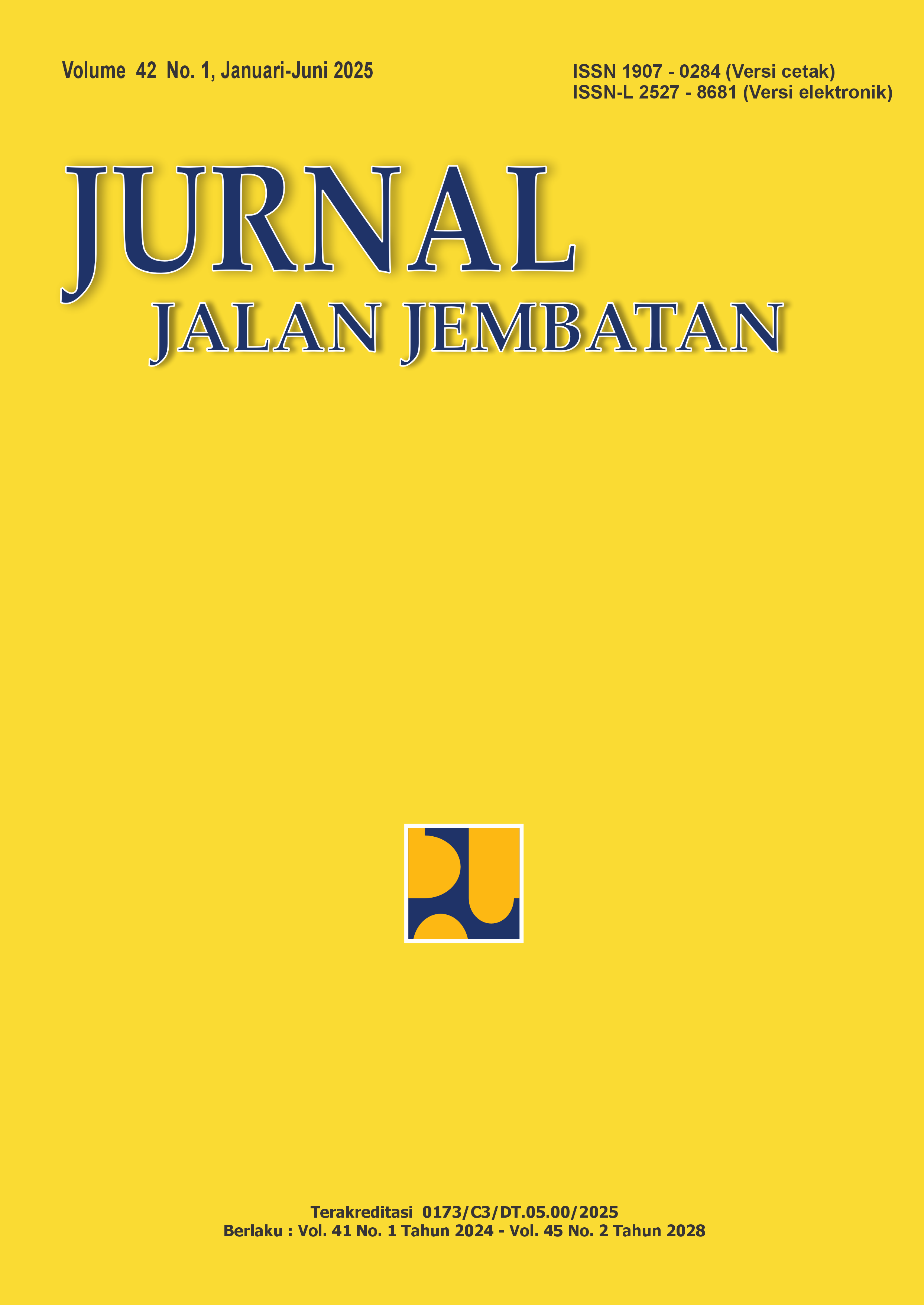ANALISIS POTENSI LIKUEFAKSI PASIR PANTAI ANYER SEBAGAI SUBGRADE JALAN YANG DISTABILISASI DENGAN BAKTERI SPOROSARCINA SP
Isi Artikel Utama
Abstrak
Earthquakes are natural disasters that can cause significant damage to infrastructure, particularly the subgrade layer, and induce secondary effects such as liquefaction. This impact phenomenon is indicated by loose soil material, such as sand, losing its strength and exhibiting a fluid-like behaviour due to specific shocks or pressures. As a result, the soil becomes unstable so that it is unable to support the load above it. The use of loose sand as a subgrade requires repair or replacement with stronger, more stable soil, which can be addressed with the proper stabilisation method. Currently, a more environmentally friendly soil stabilisation method has been found, known as bio-grouting or MICP (Microbially Induced Calcite Precipitation). This study was conducted to develop and apply Sporosarcina Sp bacteria on Anyer beach sand with four methods, including A (injection, 10 ml of bacteria), A1 (soaking, 10 ml of bacteria), B (injection, 100 ml of bacteria), and C (injection, only nutrients). The results of soil stabilisation using four methods in a 14-day incubation period can increase the CBR value of the soil by more than 40% compared to the initial condition. The CBR value of the soil, which was originally around 2.25%, became 3.156% (method A), 3.016% (method A1), and 3.367% (method B). The increase in the SF value, which was previously around 0.20-0.21, was shown after stabilisation, and the SF value was obtained with a range of 2-5.6 in methods A, A1, and B. This value has increased significantly and can reduce the potential for liquefaction in sand as a road subgrade with a depth range of 0-1 m, as shown at the research location.
Kata Kunci: gempa bumi, likuefaksi, tanah pasir pantai, Sporosarcina Sp, subgrade
Keywords: earthquake, liquefaction, coastal sandy soil, Sporosarcina Sp, subgrade
Rincian Artikel

Artikel ini berlisensiCreative Commons Attribution-NonCommercial-ShareAlike 4.0 International License.
Penulis yang menerbitkan jurnal ini setuju dengan persyaratan berikut:
- Penulis mempertahankan hak cipta dan memberikan hak jurnal publikasi pertama dengan karya yang secara bersamaan dilisensikan di bawah Lisensi Atribusi Creative Commons yang memungkinkan orang lain membagikan karya tersebut dengan pengakuan dari karya penulis dan publikasi awal dalam jurnal ini.
- Penulis dapat memasukkan pengaturan kontrak tambahan yang terpisah untuk distribusi non-eksklusif dari versi terbitan jurnal tersebut (misalnya, dimasukan ke repositori institusi atau publikasikan dalam sebuah buku), dengan pengakuan publikasi awalnya di jurnal ini.
- Penulis diijinkan untuk memposting data/karya tulis ilimiah yang terdahulu secara online (mis., repositori institusi atau di situs web penulis) karena dapat menyebabkan pertukaran yang produktif, serta kutipan karya yang diterbitkan sebelumnya dan yang terdahulu.
Setiap naskah yang dikirimkan harus disertai dengan "Pernyataan Keaslian Naskah", dan "Pernyataan Copyright Transfer".

